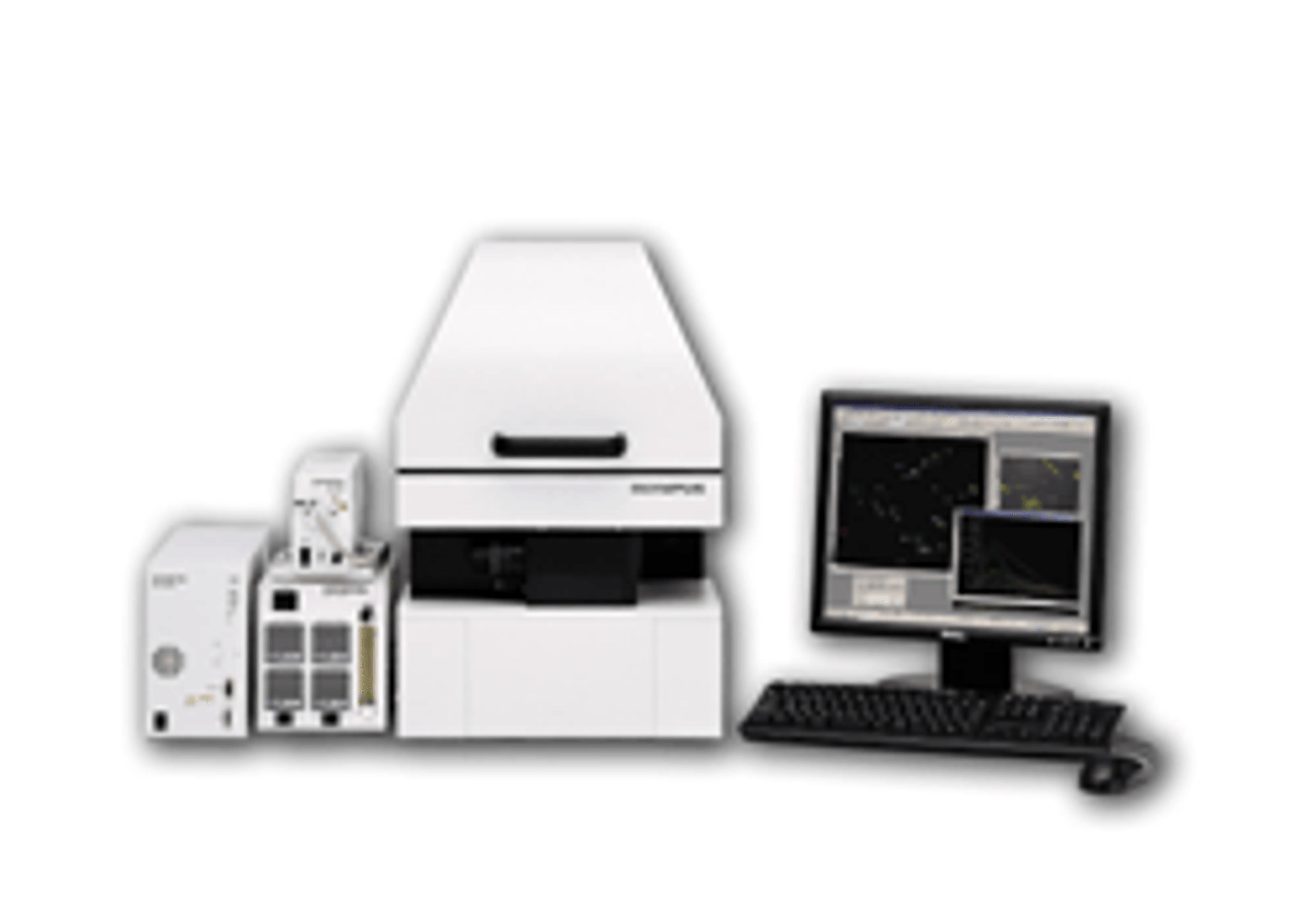Olympus Introduces Peerless New Bio-luminescence Imaging System
30 Mar 2008Olympus has introduced the LV200 Luminoview Bio-luminescence microscope (BLM) to its advanced live cell imaging range. The LV200 is a quantum leap in luminescence microscopy and features a highly specialised optical design to maximise light collection, enable dual-colour luminescence, as well as provide brightfield and fluorescence overlays. The first commercially available luminescent microscope, the LV200 boasts full environmental control for long term live cell imaging, providing unprecedented sensitivity and resolution whatever the magnification. The Olympus LV200 Luminoview provides peerless bio-luminescence microscopy imaging for small organisms and slice cultures as well as at the single cell scale.
Bio-Luminescence imaging has great advantages over fluorescence imaging since it combines a high signal-to-noise (S/N) ratio with no background luminescence or phototoxic effects. What is more, only viable cells emit luminescence signals, and measurements are absolute and directly quantitative. However, in microscopy, luminescent light is not as bright as fluorescence, and has therefore required expensive and often complex imaging systems - until now. The LV200 Luminoview has been carefully designed using Olympus’s expert knowledge of the optical and experimental requirements for live cell bio-luminescence microscopy (BML):
Unique optics
The optics of the LV200 are designed to provide the straightest path and shortest distance between the object and the camera, to ensure that as much light as possible reaches the CCD chip. Therefore there are no additional mirrors, filters or lenses to absorb the low levels of light that are emitted through bio-luminescence. Furthermore, the extremely high N.A. of the tube lens affords a vast increase in sensitivity compared to a conventional microscope system.
The LV200 optics produce signal outputs many times higher than traditional systems and therefore uses a conventional CCD or EM-CCD camera. In addition, the LV200 has integrated excitation and emission filter wheels to enable dual-colour luminescence and transmission fluorescence. These unique optical properties also ensure that high magnification objectives can be used, with suitable camera integration times, to provide exquisite single cell resolution not previously possible with luminescence imaging.
Excellent Features
With the optics providing the perfect imaging capabilities, the LV200 is fitted with a fully controllable environment to enable long term live cell imaging. This includes independent temperature control for the stage, incubation chamber, top cover and objective. This fine environmental control enables samples to be continuously monitored over days or even weeks, without the need to move the sample between the microscope and an incubator. The box is incredibly ‘light tight’ so can be used in a standard laboratory, only requiring a darkroom if light emission from the sample is extremely low.
Superior Software
The LV200 is fully integrated with the Olympus cell^M imaging and analysis software. The advanced cell^M software enables users to precisely control experimental and camera settings, as well as capture and analyse the resultant images and time series.
Example applications
- Long term, quantitative analysis of gene expression in living cells with high S/N ratio and high spatial resolution - chronobiology, developmental biology, neurobiology and gene regulation
- Ca2+ imaging for sensitive cells, long term observations and large fields of view - neurobiology, physiology and signalling research
- ATP, and ATP-coupled measurements, with high spatial resolution in single cells and extracellular matrix - neurobiology, physiology, signalling, metabolic imagining and GPCR assays research
- Imaging of samples with high autofluorescence - plant cell biology and embryology
- Imaging of active bacteria and micro-organisms - microbiology, food technology and parasitology
The Olympus LV200 Luminoview is a groundbreaking microscope system that has the potential to greatly advance our understanding of a number of different life science and medical topics.

